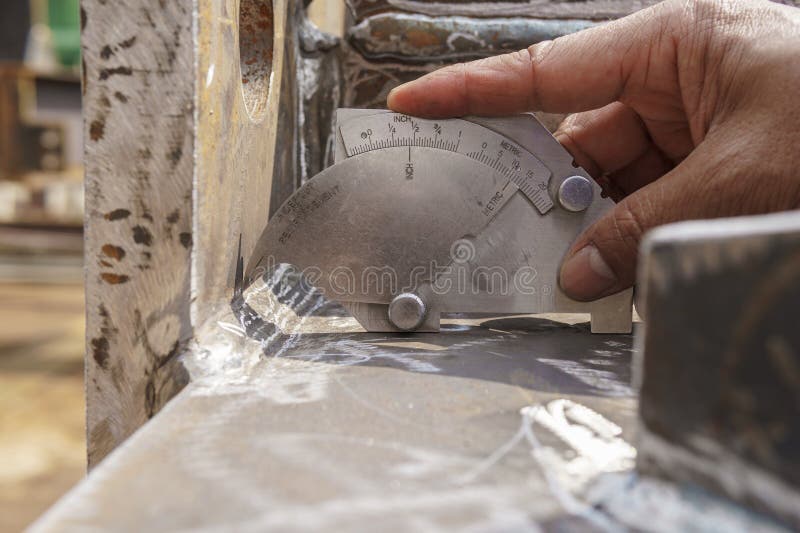Improving Your Welding Skills: Focus on Gauge Fillet Welds
Improving Your Welding Skills: Focus on Gauge Fillet Welds
Blog Article
Fillet Weld Layout Approaches: Maximizing Joint Performance and Looks for Structural Integrity
In the world of architectural engineering and construction, the importance of fillet weld design strategies can not be overemphasized. By diligently taking into consideration aspects such as weld profile optimization, material option, joint prep work methods, welding procedure efficiency, and aesthetic improvement producers, approaches and designers can accomplish an unified equilibrium in between capability and look in their bonded frameworks.
Weld Account Optimization


Attaining an optimal weld profile includes a thorough consideration of variables such as material thickness, joint setup, welding setting, and wanted welding speed. Additionally, the choice of ideal welding parameters, such as voltage, current, and travel speed, is essential in regulating the form and measurements of the fillet weld. Utilizing advanced welding methods, such as pulse welding or robot welding, can better improve the weld account to meet particular style demands and high quality criteria.
Essentially, weld account optimization is a basic facet of fillet weld design that directly influences the overall performance and reliability of welded joints in structural applications.
Material Selection Considerations
When considering material selection for fillet weld design, the compatibility of the base metals is a crucial element influencing the structural integrity of the joint. It is important to choose materials that not just bonded with each other properly yet additionally have similar mechanical properties to guarantee the tons is uniformly dispersed between the base and the weld steels. Welding products with significantly different buildings can result in issues such as stress focus, early joint failing, or fracturing.
Furthermore, the setting in which the bonded framework will operate have to be taken right into account when choosing materials. Factors like deterioration resistance, temperature fluctuations, and direct exposure to chemicals can all influence the durability and performance of the weld joint. By picking materials that are suitable for the desired application and atmosphere, the overall durability and integrity of the bonded joint can be significantly boosted.
Therefore, detailed factor to consider of material compatibility and ecological aspects is critical in ensuring the weld joint's toughness, sturdiness, and overall architectural stability.

Joint Prep Work Methods
Considering the vital function product option plays in making certain the architectural integrity of fillet weld joints, it is important to execute exact joint prep work methods that enhance the connection in between the base steels. Joint preparation is an important step that directly influences the high quality and stamina of the weld.
In addition, tack welding the elements in place prior to the last weld assists keep positioning and minimizes distortion throughout the welding process. By meticulously adhering to these joint preparation techniques, welders can improve the overall performance and appearances of fillet weld joints while guaranteeing architectural stability.
Welding Refine Effectiveness
Efficient welding processes are crucial for accomplishing optimal productivity and top quality in fillet weld fabrication. One crucial aspect of enhancing welding procedure efficiency is choosing the appropriate welding method. Variables such as product type, joint design, and welding setting should be carefully considered to determine one of the most suitable technique. As an example, processes like gas steel arc welding (GMAW) and flux-cored arc welding (FCAW) are commonly made use of for fillet welds due to their versatility and speed (Gauge Fillet Weld).
Routine calibration of welding makers, assessment of consumables, and maintenance of welding lanterns can stop downtime and revamp, inevitably conserving time and sources. Trained welders are extra experienced at readjusting parameters, repairing problems, and keeping constant weld high quality.
Visual Enhancement Methods
To enhance the quality of fillet weld manufacture, applying visual enhancement approaches can play an important duty in ensuring precision and precision during the welding procedure. Visual enhancement helpful hints approaches include numerous techniques focused on improving the look and high quality of fillet welds. One typical approach is making use of back removing systems to eliminate oxidation on the backside of the weld, causing a cleaner, more cosmetically pleasing coating. Furthermore, utilizing correct lighting plans in the welding area can boost presence, enabling welders to monitor the weld swimming pool and guarantee consistent grain formation. Visual help such as weld size assesses and magnifying lenses can help in analyzing weld profiles and dimensions properly. The usage of contrasting marking products or momentary adding can aid in aligning and positioning the work surfaces specifically before welding. By incorporating these visual improvement methods look at these guys into the welding process, welders can accomplish not only structurally audio fillet welds yet also visually attractive outcomes that fulfill sector standards.

Verdict
Finally, maximizing fillet weld design includes mindful consideration of weld profile, product option, joint preparation, welding process performance, and aesthetic improvement techniques. By applying these methods, structural stability can be improved while also accomplishing aesthetic charm. It is very important to prioritize both efficiency and looks in fillet weld layout to guarantee the total top quality and longevity of the joint.
By meticulously thinking about elements such as weld profile optimization, material choice, joint prep work strategies, welding procedure efficiency, and aesthetic improvement producers, methods and engineers can achieve an YOURURL.com unified balance in between performance and appearance in their welded structures.In the realm of fillet weld style, enhancing the weld account plays a critical function in making sure architectural stability and performance. The weld account, which consists of the dimension and form of the weld cross-section, straight impacts the distribution of stress and load-bearing ability within the joint. It is crucial to select materials that not only bonded together efficiently but likewise have similar mechanical residential or commercial properties to make certain the lots is equally dispersed in between the weld and the base metals - Gauge Fillet Weld.In verdict, enhancing fillet weld layout involves cautious consideration of weld profile, product selection, joint prep work, welding procedure efficiency, and aesthetic improvement approaches
Report this page